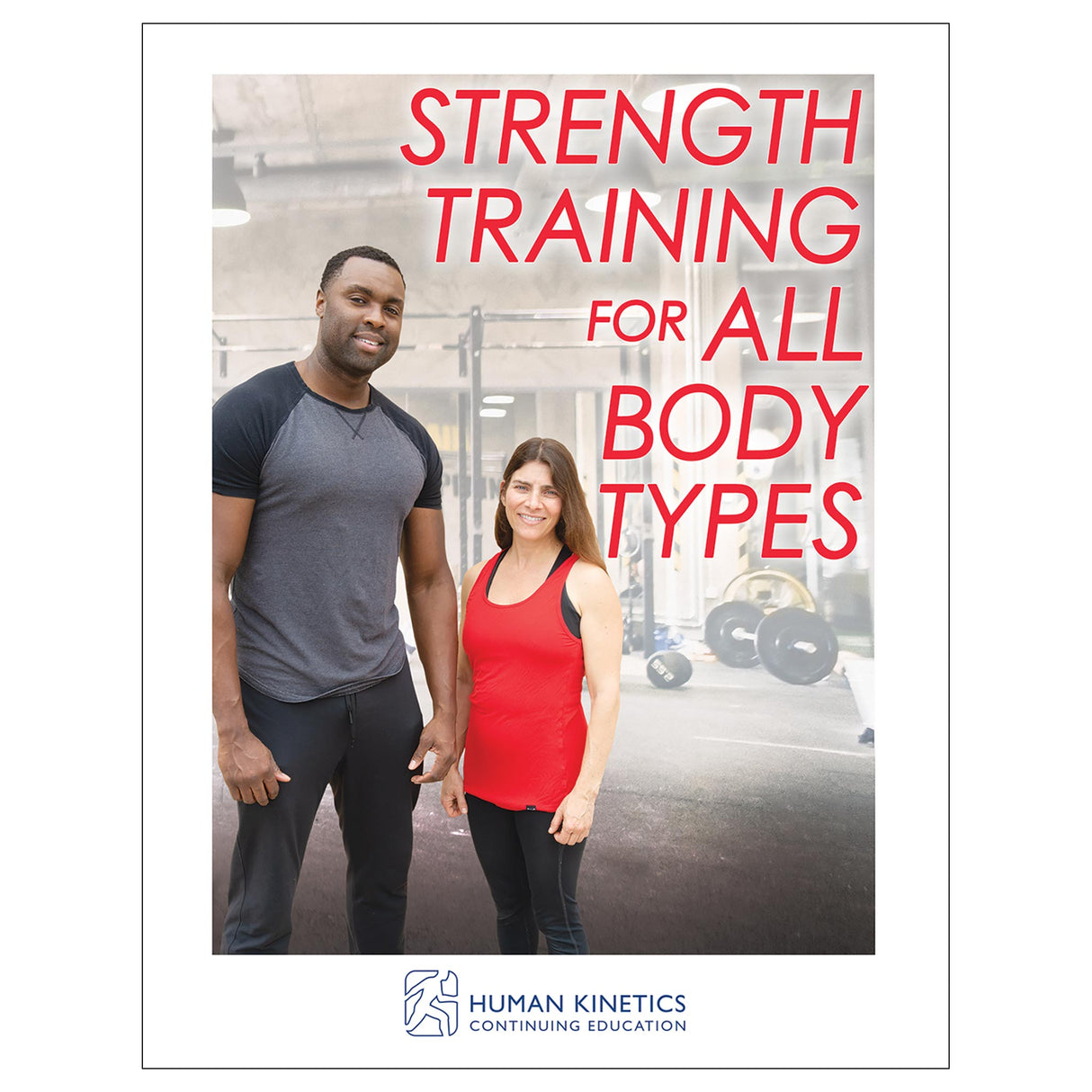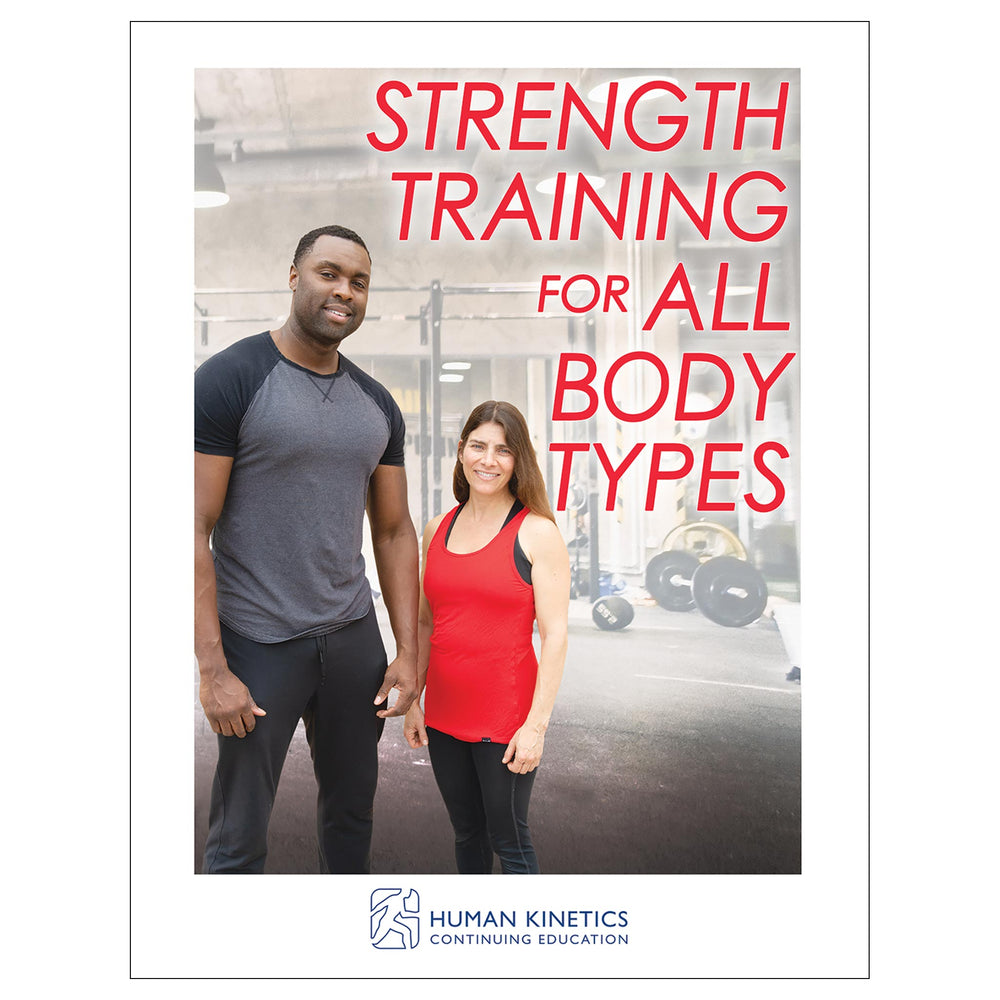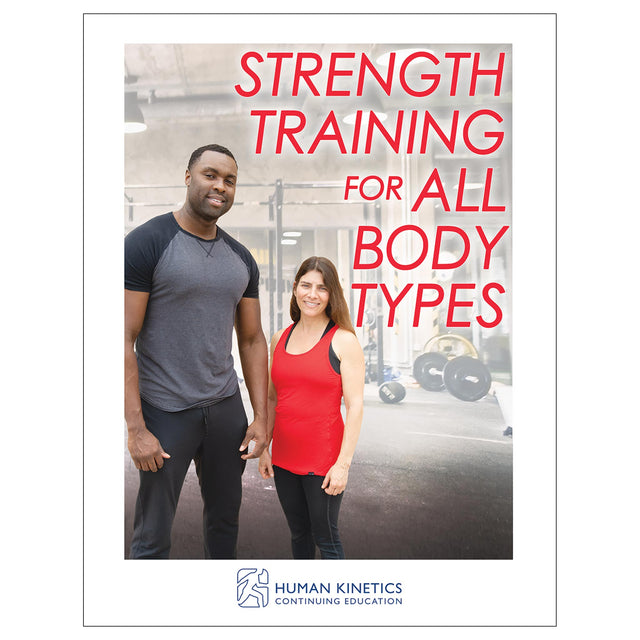This package includes the following:
-
Strength Training for All Body Types book
- Online continuing education exam
In
Strength Training for All Body Types: The Science of Lifting and Levers, Lee Boyce and Melody Schoenfeld have teamed up to create a unique resource that explains how different bodies manage various exercises and how to best take advantage of physical attributes to optimize those movements.
Strength Training for All Body Types covers 13 body types:
- Tall
- Short
- Big all over
- Short arms and long legs
- Short legs and long arms
- Long torso
- Long torso, short legs, and long arms
- Long torso, long legs, and short arms
- Short torso, short legs, and long arms
- Short torso, long legs, and short arms
- Long femurs and short shins
- Long shins and short femurs
- Small hands
Professionals working with people of various shapes and sizes will learn how to modify common lifts like the deadlift, squat, and bench press to maximize training outcomes and reduce the risk of injury. Detailed analysis and descriptions for each exercise variation provide the rationale for the modification and the science that explains why it is beneficial. The authors also dig into the physics of the body and describe how the length and proportions of body levers (e.g., arms, legs, torso) have an impact on the body’s response to load. You will be better equipped to help clients use their body’s proportions to their advantage rather than being a hindrance to optimal performance.
After reading the book, certified professionals can take the companion CE exam to earn continuing education credits.
Learning Objectives
- Explain the importance of the 11 components of fitness.
- Identify common variations in skeletal anatomy.
- Describe the starting position for the most common movement patterns.
- Explain the relationship between levers and forces.
- Cue the proper setup and performance technique for the deadlift exercise.
- Analyze and correct appropriate squat technique based on body size.
- List the bench press variations that assist clients with long arms.
- Select overhead pressing movements that target a lifter’s weak points.
- Modify the chin-up based on arm length.
- Determine rowing variations that are most beneficial for different body types.
- Design effective abdominal exercise routines.
- Choose the best accessory exercises to complement the primary exercises.
- Use your understanding of conditioning methods to determine when to implement each method.
- Consider the proper sequence for a workout based on a client’s body type.
Audience
Personal trainers and strength and conditioning specialists and coaches.
Part I. Foundations
Chapter 1. The Importance of Body Type Specificity
Chapter 2. Common Body Types in Sport
Chapter 3. Introduction to Fundamental Movement Patterns
Chapter 4. Levers and Forces
Part II. Exercise Optimization
Chapter 5. The Deadlift Pattern
Chapter 6. The Squat Pattern
Chapter 7. The Bench Press
Chapter 8. The Overhead Press
Chapter 9. The Chin Up
Chapter 10. The Row Pattern
Chapter 11. Abdominal Stability
Part III. Rounding Out a Comprehensive Strength Program
Chapter 12. Accessory Work
Chapter 13. Considerations for Conditioning Training
Chapter 14. Sample Workouts
Lee Boyce made the early decision to pursue fitness training as a career while he was still doing his university studies, and he never looked back. He is a strength coach and educator based in Toronto, Canada. He has been helping clients and athletes with strength and conditioning, sport performance, and hypertrophy since 2007. He has developed international recognition as a trainer and as a prolific fitness writer. His expertise has seen him published over 1,200 times by some of the largest publications in the world of fitness and lifestyle media, including Men's Health, Oxygen, Train Magazine, Inside Fitness, Shape, Wall Street Journal, Huffington Post, Men's Journal, Esquire, Strong Fitness Magazine, and the National Strength and Conditioning Association's Personal Training Quarterly. Lee’s first contribution to a full book came in 2013 with his inclusion in Men’s Fitness Exercise Bible: 101 Best Workouts of All Time, which became an Amazon best seller.
A former national-level university track athlete (sprint and long jump) and kinesiology major, Boyce credits this blend of theoretical and practical experience with his depth of understanding of the human body and biomechanics and his ability to simplify concepts that can be difficult for people to grasp. As a public speaker, Boyce uses his skills to deliver lectures, workshops, and seminars around North America and abroad, sharing innovative troubleshooting guidelines and unique perspectives for trainers looking to improve professionally. As a part-time college professor at Toronto's Humber College, he encourages critical thinking and a departure from the confines of one-size-fits-all, rule-based exercise science advice. It’s this type of thinking that developed his passion for speaking and writing about anthropometry and body types as they pertain to resistance training.
Outside of coaching, speaking, writing, and training himself, Lee makes sure he keeps current with his favorite hobby of all time: movies. A book on Lee’s favorite films would likely be twice the length of this one.
Melody Schoenfeld, MA, CSCS, has well over 27 years of personal training experience and was named National Strength and Conditioning Association’s 2019 Personal Trainer of the Year. She is the owner of Flawless Fitness, a small personal training studio located in Pasadena, California. Melody holds a master's degree in health psychology. She has held state and national records in all three lifts in powerlifting (squat, bench press, and deadlift). She competes in strongman, grip sport, and mas wrestling events, and she performs old-time strongman feats of strength such as tearing phone books and bending steel bars.
Her expertise in health and fitness has been featured on numerous television programs throughout the United States, and she has been published and quoted in popular media such as Shape, Oxygen, Breaking Muscle, Girls Gone Strong, My Fitness Pal, Men's Fitness, and Men’s Health. Melody has several articles published by the Strength and Conditioning Journal. She is the author of Pleasure Not Meating You: A Science-Based Approach to the Vegan Lifestyle (And Some Recipes, Too) and Diet Lies and Weight Loss Truths. Melody speaks nationally and internationally on a wide variety of fitness and nutrition topics. In her spare time, Melody can also be found as the front woman of a number of music groups (mainly heavy metal). When she’s not doing all that, she’s probably petting a dog somewhere.





